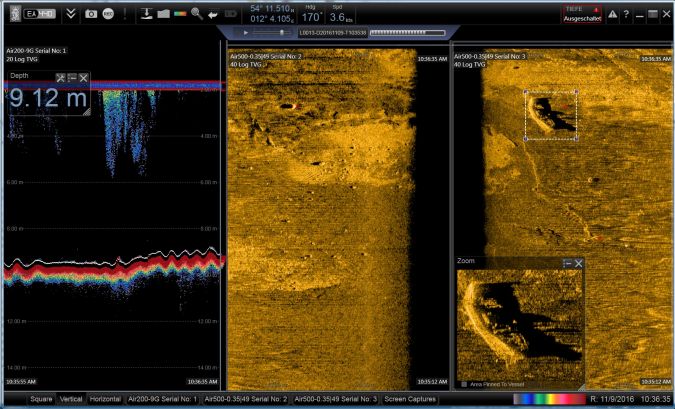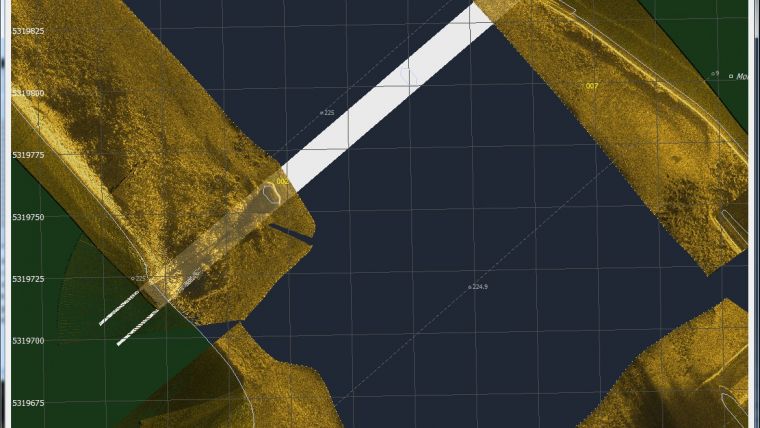Bathymetry and the Power of Sound
How a Single Device Can Change Our Understanding of the Depths Below Us
The single beam echosounder has come a long way. First developed in the early 20th century in response to the RMS Titanic disaster of 1912, early models used a Fessenden oscillator to generate a signal of around 1kHz. The resulting broad beam was suitable for depth measurements and the location of large targets – a huge technological step forward – but incapable of the fine resolutions required to gain information on the nature of the seabed.
Jump forward a little over a century and the picture is very different. Advanced systems, working across multiple frequencies, can operate with beam widths as narrow as 0.5° and a range of 10m, which permits the resolution of targets smaller than 5cm. Meanwhile, depth measurements are possible to full ocean depths – an impressively diverse achievement for a single technology. Hydrographers take full advantage of this diversity when mapping the seabed, and one of the tools leading the market is Kongsberg’s EA440 wideband, single-beam echo sounder.
Getting the Right Data
The performance of an echo sounder is bound by physics: high frequencies are necessary to obtain narrow beam widths for high resolution, but extreme depths are only achievable with lower-frequency, less easily scattered signals. Lower frequencies have better penetration, so if information regarding the make-up of the seabed is required – rather than an accurate measurement to the top layer of sediment – then a low-frequency transducer is necessary.
To obtain the full picture, then, hydrographers need to be able to deploy multiple transducers across multiple frequencies, with a variety of powers and mounting angles to explore a range of depths and to capture as much information from either side of the boat as possible. It is in this area that the EA440 excels: each wideband transceiver (WBT) can support up to four transducers, with the current models ranging from 10kHz to 500kHz. The EA software, which runs on a PC or laptop, supports two WBTs, allowing up to eight transducers in a single EA440 setup.
This versatility allows the EA440 to be configured in a number of different ways. As a depth-measuring device, it can measure depths from 1m to 3,000m to accuracies of less than a centimetre. The ability to deploy multiple transducers means that a single EA440 can be configured for simultaneous depth observations at different locations of an installation, e.g. on a boom to measure spot depths across a wide swath.
The system also supports side-scan sonar transducers, of which two are available at 200kHz and 500kHz. With a 50° vertical beam width and horizontal beam widths of 2° and 0.5° respectively, the system can produce high-resolution seabed images over a wide area at shallow and medium depths. This is ideal for imaging objects on the seabed such as wrecks, pipelines and cables, boulders or obstacles, or other objects that may prevent safe navigation. Side-scan sonar surveys may also be used to monitor riverbanks, erosion, landslides and flow-induced sediment deposits.
Accurate depth and seabed profiles may be the focus for navigation, but for hydrographers and engineers looking to place pipelines, cables or installations, the nature of the seabed is just as important. By choosing lower frequency transducers, the EA440 can operate as an effective tool for sub-bottom profiling. The 15kHz transducer typically used for this application gives a maximum seabed penetration of 10–15m in water depths up to 300m, making it most useful when only the top-level sediments are of interest, such as for port and river surveys. Different bottom compositions (rock, sand, mud, etc.) will result in different profiles in the echograms, and significant information can be gained through detailed analysis of the raw data, which the EA440 outputs in the industry-standard SEGY format.

The Best of All Worlds
The humble echosounder has changed dramatically in the 100 years since it was first conceived, and with its multiplicity of specialist functions the EA440 exemplifies what is possible with modern systems. It can even operate with a hydrophone via a connection unit, allowing monitoring of signals and noise in the frequency range from 10kHz to 90kHz, such as that made by vessel propellers.
And while the capabilities detailed above make the EA440 a powerful tool for hydrographers and maritime engineers in any of its guises, its capacity to support multiple transducers means that it holds a further ace up its sleeve: the ability to support all three major functions – depth, side-scan and sub-bottom survey – with a single WBT and a standard PC. A typical all-in-one setup might comprise a 200kHz depth transducer, a 15–17kHz sub-bottom transducer and a pair of 500kHz side-scan units, neatly filling the four WBT inputs and giving an unparalleled quantity of information about the environment below and around the vessel.
This flexibility of operation allows hydrographers to conduct detailed surveys with a single pass, saving both time and money. The technology in sounders such as the EA440 has done for bathymetry what infrared cameras did for night vision: the days when what lay below the boat remained largely a mystery have gone, and high-resolution, real-time imaging can now be easily attained by any vessel, with a single device.














